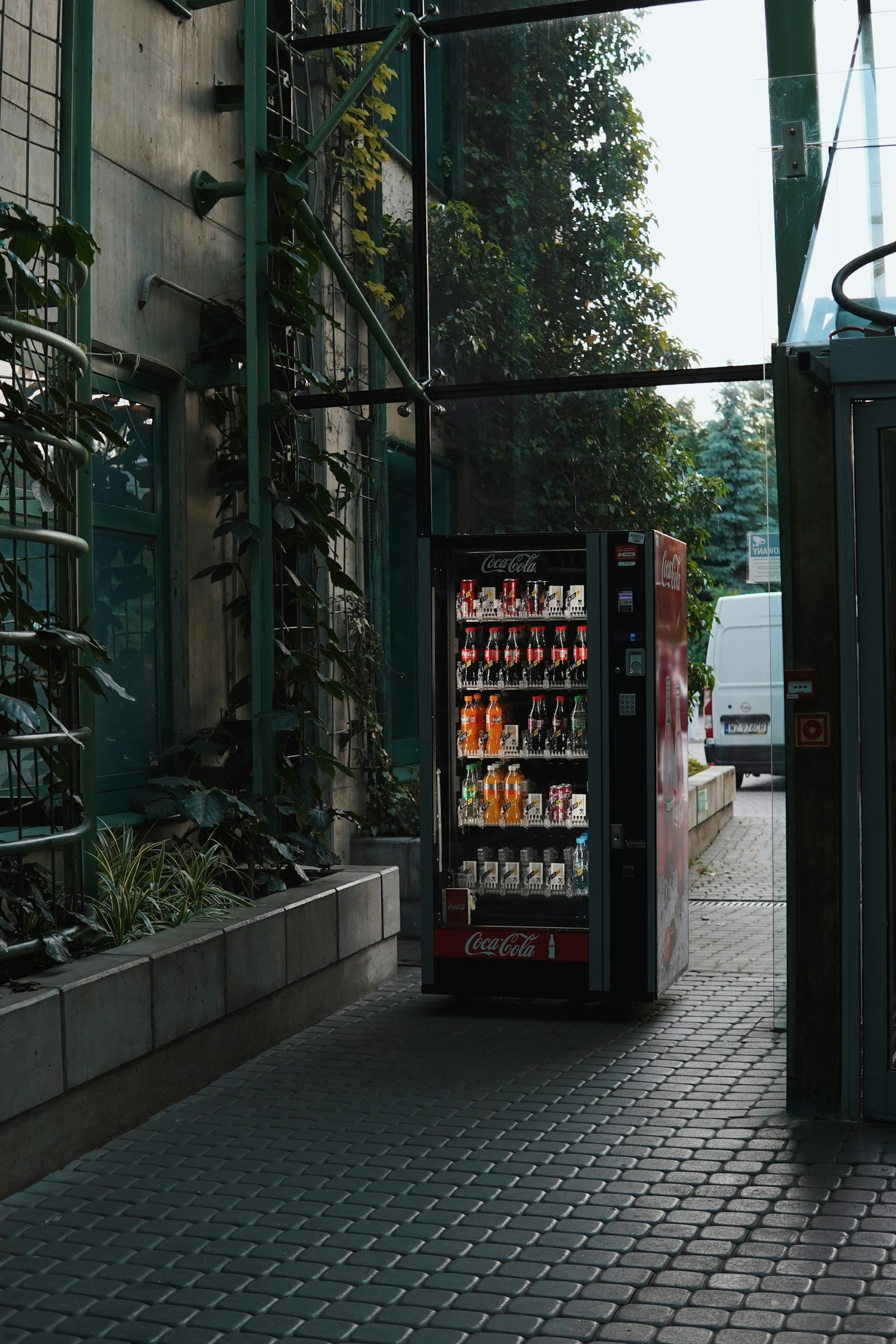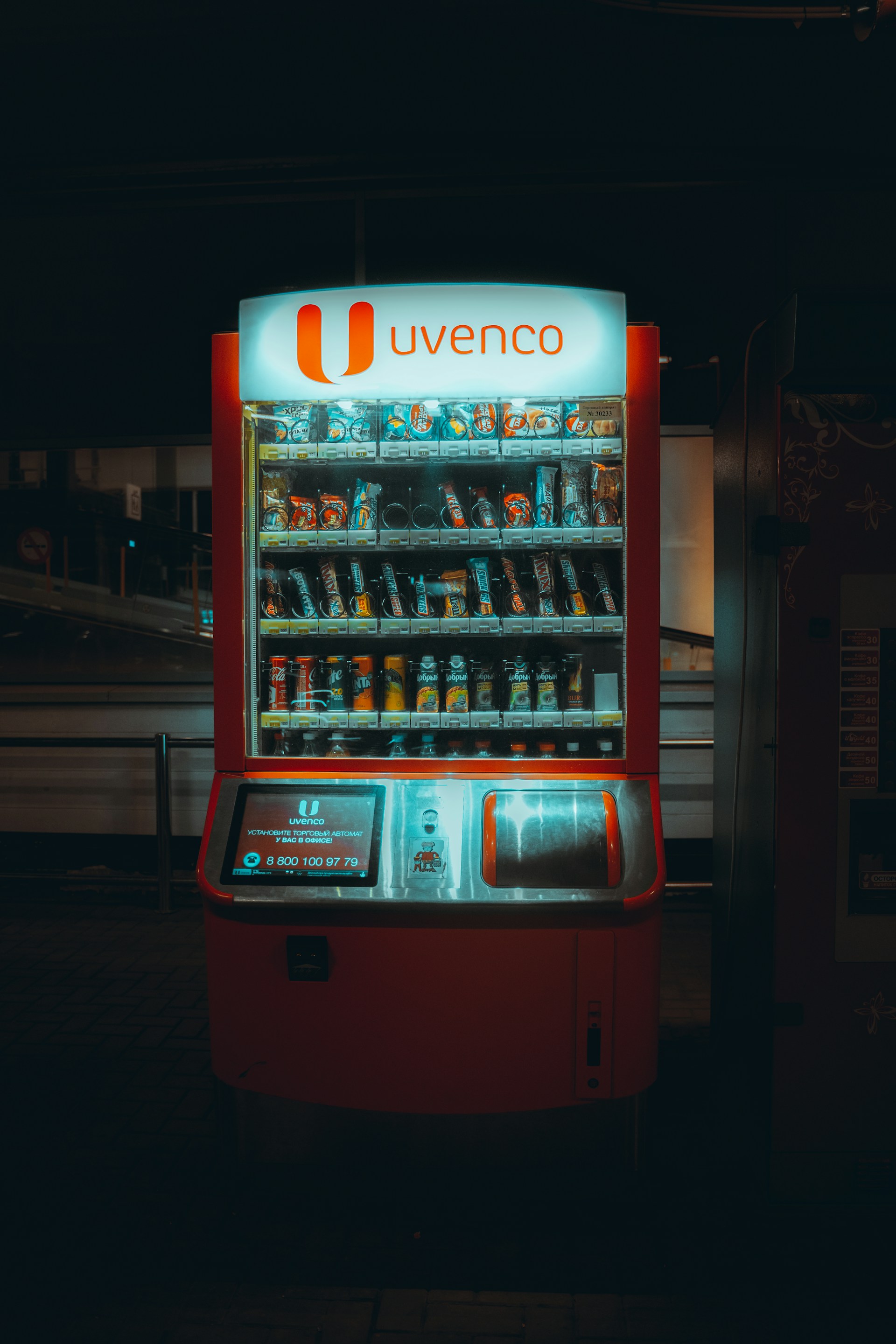Today’s vending machine industry is full of all sorts of payment options, including advanced systems like mobile payments (Apple Pay, for example) and card readers to let customers pay with debit and even credit cards. Not all vending machines will accept every payment system, and many vending machine users wonder whether modern machines will accept coins and bills. Below, we’ll provide an answer to the question “Do vending machines take dimes?” and provide a comprehensive discussion about vending machines and their cash/coin payment systems.
Do Vending Machines Take Dimes, Pennies, Nickels, and Other Coins?
Most vending machines do accept dimes, nickels, quarters, and other coins and bills in addition to one dollar bills and other variations of coins/paper money. Many vending machines offer this payment system in addition to one requiring card readers or apple pay, but older machines may only accept paper money and coins. The one exception is pennies; a penny will usually not be accepted by a vending machine or any other type of coin machine.
Modern smart machines, especially ones that sell higher-priced items, may not have a coin slot at all. If that is your only form of payment, you’ll have to look for a different machine. Vending machines that sell cheap items (snacks and drinks, for example) will almost always take coins and bills. It is essentially impossible to find snack machines or coffee vending machines, for example, that won’t accept change.
How Do Vending Machines Give Change?

Any time an individual is paying for a vending item with larger coins and bills than are needed, the vending machine will be required to give change through the refund slot. The process of giving change is one of the most sophisticated things a vending machine will do, as it needs to recognize each coin that is inserted, keep track of the total, calculate how much change is needed, and dispense the appropriate amount of money back to the customer.
Most vending machines use a variety of mechanisms to identify what monetary value is attached to each bill and coin inserted into the machine. A one dollar bill will differ from a five dollar bill in its patterning, and vending machines are equipped with scanners to check for correct ink type, reaction to UV light, and specific elements that distinguish one bill type from another.
Small coins will be identified by their diameter, width, number of ridges, and electrical conductivity. For example, a dime has 118 ridges and measures only 0.053 inches in diameter.
Once the machine has correctly identified the bills/coins and added up the total, it will calculate how much change is required based on the price of the chosen item. Then, the machine will use its stored change to refund the customer with small coins.
What If the Vending Machine is Out of Coins?
Many machines will not accept cash payments if they do not have enough money in their hopper to provide change for the purchase. However, most modern vending machines are capable of signaling to the customer that only exact change is accepted, allowing customers with enough money to still purchase an item. Other machines will be automatically switched into “out of order” mode to prevent transactions entirely when they are low or completely empty of change.
Can You Use Vending Machines to Convert Money?

Most vending machines can, in fact, be used to convert money. Not every vending machine will be capable of this handy trick, but most vending machines will be. The process to convert money with a vending machine is incredibly simple. All you have to do is insert your small coins (dimes, nickels) in appropriate amounts and then press the coin return button.
If you’re looking for specific coins, such as quarters for a laundry machine or loonies for a cart at a grocery store, you’ll need to count out your smaller change precisely to ensure you get it right. If you’re just looking to lighten up your wallet/make space for other items, you can insert all of your change and the machine will simply return the largest denominations it can.
Keep in mind that a vending machine only has so much change inside, so you will likely only be able to change out a few dollars at each machine. Another caveat is that some machines will simply return the same coins you put inside rather than exchanging them for quarters or higher-value coins.
Why Is My Vending Machine Rejecting Coins?
Although many vending machines are incredibly reliable machines full of safety features and functionality checkers, things can still go wrong. Any machine that is capable of accepting coins as payment for a purchase will likely end up rejecting coins at some point throughout its lifespan. Below, we’ve gathered all of the possible reasons this may occur and what to do about it.
Contamination of Coins
Coin contamination is one of the most likely reasons for vending machines to refuse cash payment. If it isn’t able to read the coin properly due to accumulated dirt, grease, or any other form of contamination, it will refuse the coin. To fix this issue, a new coin needs to be inserted or the coin needs to be cleaned off.
Contamination in Coin Mechanism
Over time, contamination can accumulate in the coin mechanism of a vending machine. Once it reaches a critical level, the coin reader will not be able to function and the vending machine will become incapable of reading and accepting coins for payment. To fix this, the coin mechanism will need to be taken apart and cleaned.
Low Amount of Change in Machine
Vending machines are programmed to refuse payments once the amount of change in the hopper has become low or run out entirely. This is to ensure that customers won’t lose money if they don’t pay with exact change. The machine will begin accepting coins again as soon as the reserves have been restocked by the vending owner or customers have paid for enough items with exact change.
Change Storage is Full
Just like low change can cause a vending machine to reject coins, the opposite problem can also occur. If a vending owner fails to empty the machine of coins often enough, the change storage will become full and prevent the machine from accepting any more change. The fix for this is obvious; the vending owner or manager simply needs to empty most of the change and the machine will become fully functional again.
Jammed Coin
Oftentimes, a vending machine will refuse to accept coin payments due to a jammed coin. This means a previous customer inserted a coin that got stuck, and the machine was not able to resolve the issue by itself. A jam can occur for a number of reasons, and a vending machine owner will need to resolve this issue by opening up the machine and clearing the jam.
Damaged Coin Mechanism
Throughout the life of a vending machine, the internal mechanisms will experience wear and tear. Rough handling by customers can also produce internal damage. A damaged coin mechanism will not be able to fulfill its role of checking inserted coins, and the machine may begin to reject coins as a result. In order to restore functionality to the machine, the coin mechanism will need to be repaired or replaced entirely.
Outdated Coin Mechanism
Vending machine technology is continuously evolving, and so is currency. An outdated coin mechanism may become incapable of recognizing newer types of currency, and it will reject them as a rule. Replacing an old coin mechanism with a more updated model will resolve this issue.
Are you having some other issues that need fixing? Go check our guide on how to resolve most prevalent vending machine issues.
Have Other Questions About How Vending Machines Operate?

As a vending machine owner or a member of the general public, you have more questions about how newer vending machines operate.
Vending machines can require a reset for a variety of reasons, but if you’ve never done it yourself before, it can be a daunting process. You can read all about it here.
Every vending machine is opened with a key of some sort, but sometimes, keys get lost. Wondering how to open a vending machine without a key? You’ll find the answer here.
Vending machines are fallible, and every individual that uses a vending machine regularly will eventually find themselves in a frustrating situation: a stuck snack or drink. If you’re wondering about the causes or how to retrieve a stuck item, you’ll find all of the details here.
Modern machines are commonly equipped with card readers, but if you’ve never used one on a vending machine before, you may have questions. This article about vending machine card readers will provide you with the information you need.
Vending machines have evolved from mechanical devices into sophisticated, technologically-savvy machines, and as a result, they require electricity to function. Wondering how much electricity vending machines use on a monthly basis? We’ve gathered the facts here.
Wrapping Up
Although vending machine payment systems are not as simple as they used to be, they are perfectly suited to the complexity of the modern vending machine business and the advancing technology that has become available over the years. Whether you prefer to pay with coins, paper money, debit or credit cards, or mobile apps, modern-day vending machines give you the freedom to choose.










